Editor’s Note: This post is written by a member of LTV’s sponsored content team, The Leisure Explorers. Do you own a Leisure Travel Van and enjoy writing? Learn more about joining the team.
Discovering a Rainforest
Ferns. Moss. Periwinkle blue hydrangeas.
Tiny ferns sprout from moss-covered tree stumps. Moss hangs from trees and covers almost everything from roofs to water fountains. Blue hydrangeas add a pop of color along the roads. Humidity was so heavy it seemed you were wrapped in it. I savor these memories from our two trips into the rainforest in our Leisure Travel Van.
But wait–aren’t rainforests in tropical areas like Costa Rica? Did we drive to Costa Rica twice? Nope. Think Olympic National Park. More than 70% of the rainforests in the continental United States exist in western Washington State at Olympic National Park, where it rains about 12-14 feet yearly. Temperatures here rarely drop below freezing or go above 80 degrees Fahrenheit, qualifying the lush forests at Hoh, Queets, Quinault, and Bogchiel as temperate rainforests within this majestic park; other temperate rainforests in the United States are found in Alaska and the Appalachian Mountains.
As I said, we’ve been twice to the state of Washington, each time part of a long trip from our home in Michigan. Both times, we entered from a ferry that took us back into the United States from Vancouver Island. So, let’s start at Port Angeles, Washington.
Lake Crescent Lodge
You’ll find Lake Crescent Lodge about 25 miles (40 kilometers) west of Port Angeles along 101, also called Olympic Highway. Built-in 1916, this historic lodge is the hub for trails, kayak rentals, cabins, and a dining room. President Franklin D. Roosevelt visited in 1937 and signed into law the creation of Olympic National Park the following year.
Sol Duc Hot Springs
The first time we came to Washington, we thought it would be great to spend two nights at Sol Duc Hot Springs–all I can say is don’t bother. It’s nearly a half-hour drive south of 101, and to say we were surprised to see our “campground” was an understatement. The treed tent campground adjacent to this parking lot was a lot nicer. We didn’t try the hot springs, and frankly, I can’t remember why–perhaps we were anxious to get to a scenic campground.
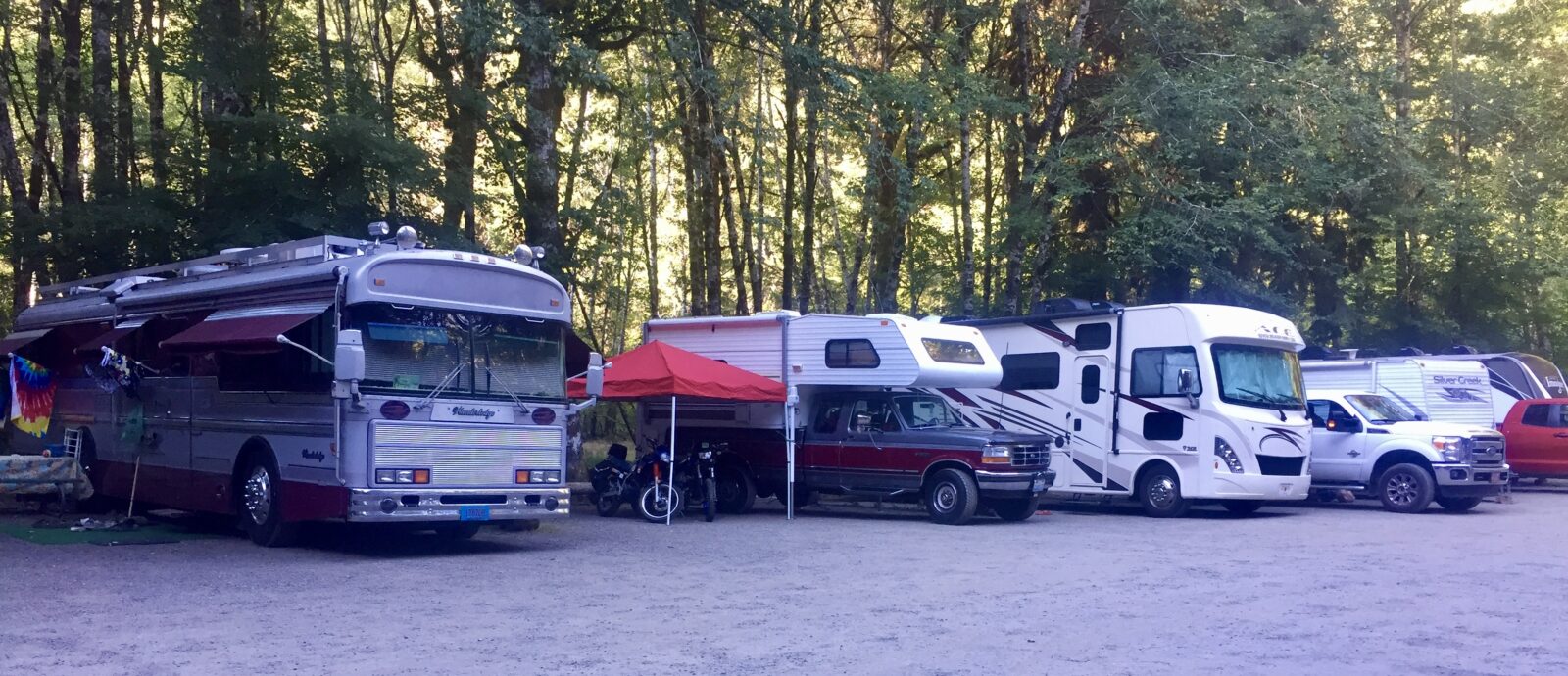
Mora Campground
Located about one hour down 101 from Lake Crescent Lodge, just past Forks, you’ll enter the lush coastal forest where Mora Campground is located, near the Quillayute River along the western coast of Olympic National Park.
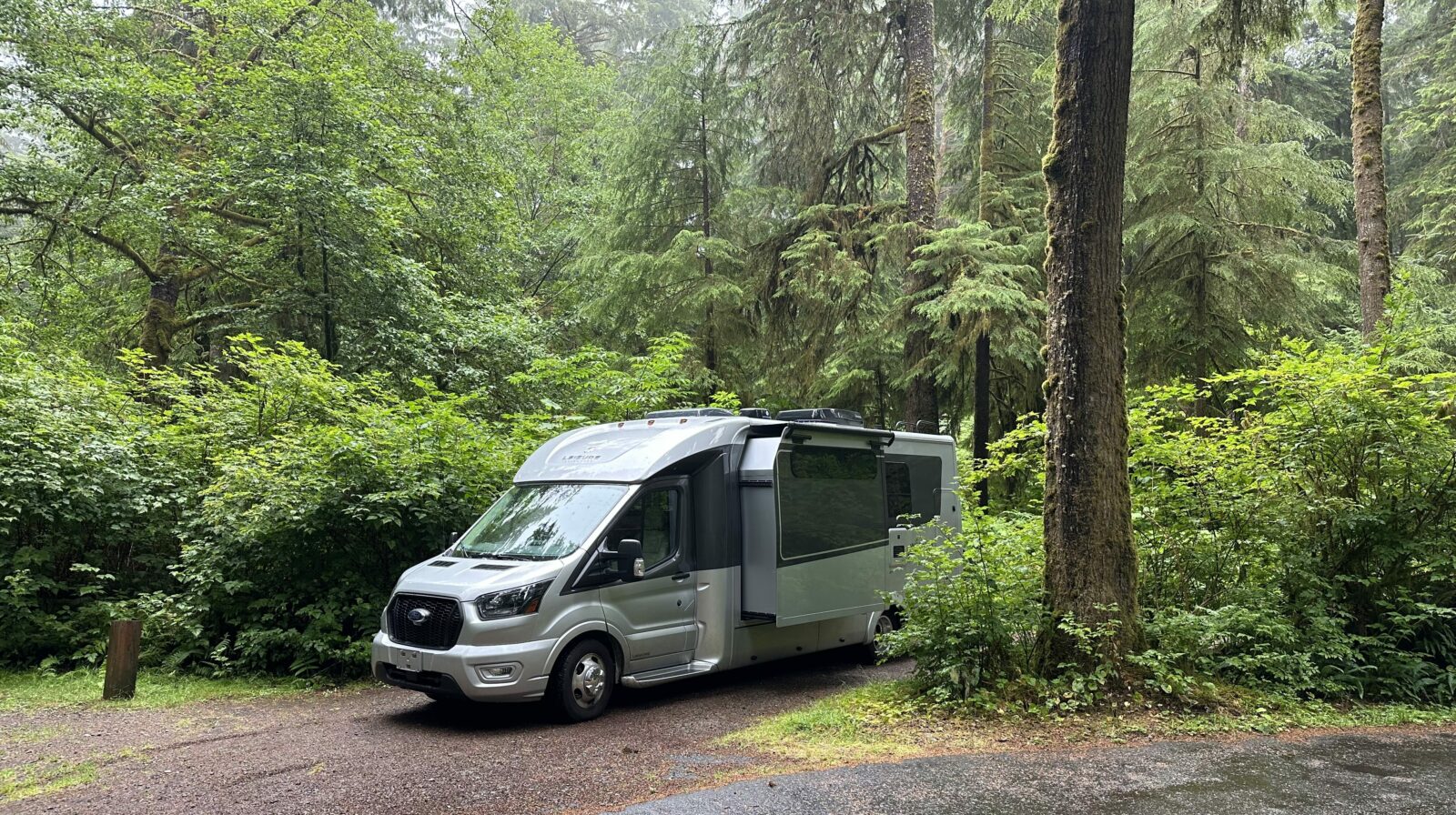
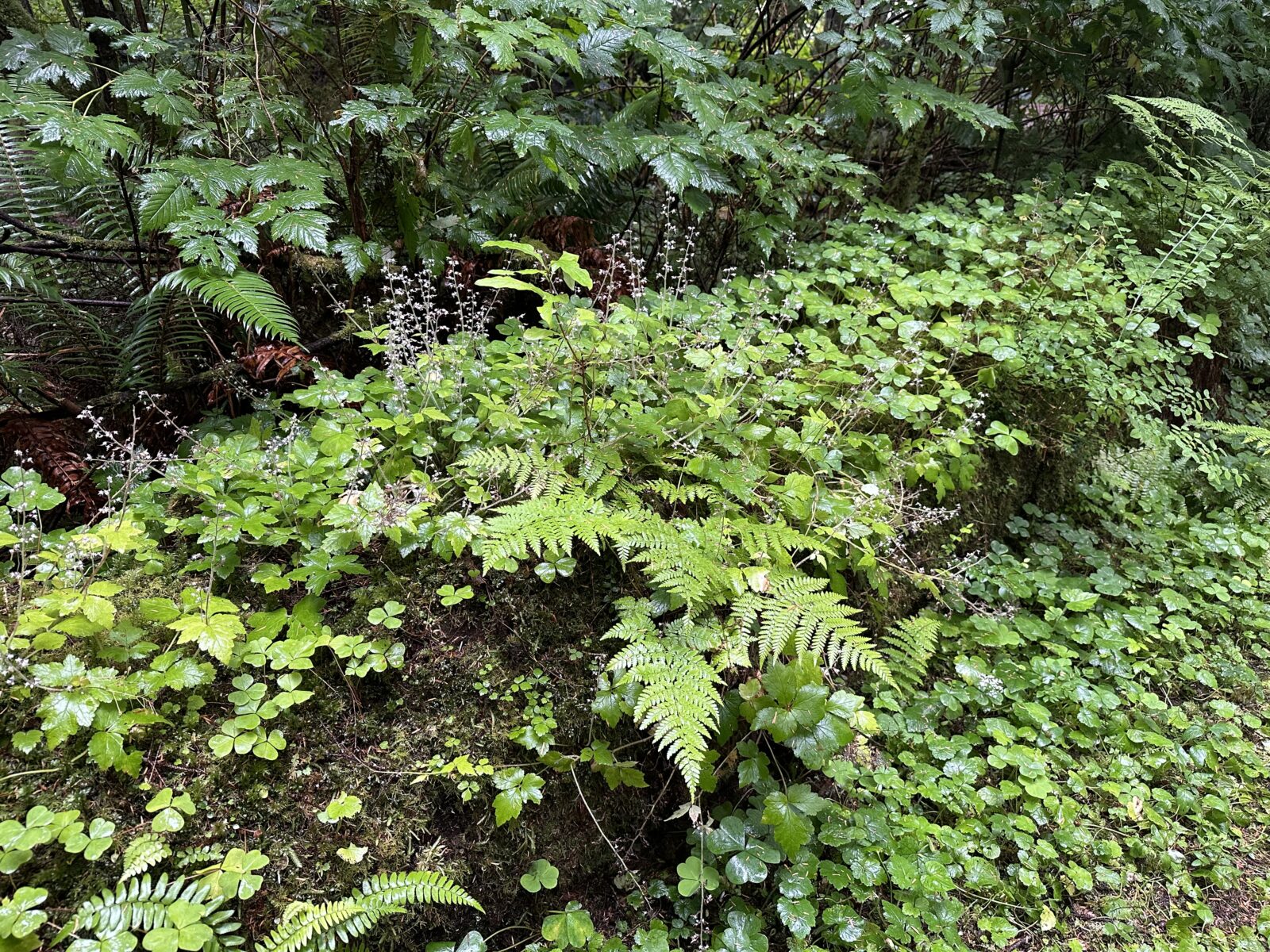
When you venture onto Recreation.gov, you’ll find that Mora Campground releases campsites by loop in three staggered blocks six months, two weeks, and four days in advance. So if you miss the first opportunity to reserve at six months, you’ll have two more chances. We lucked out with a first-come, first-served site.
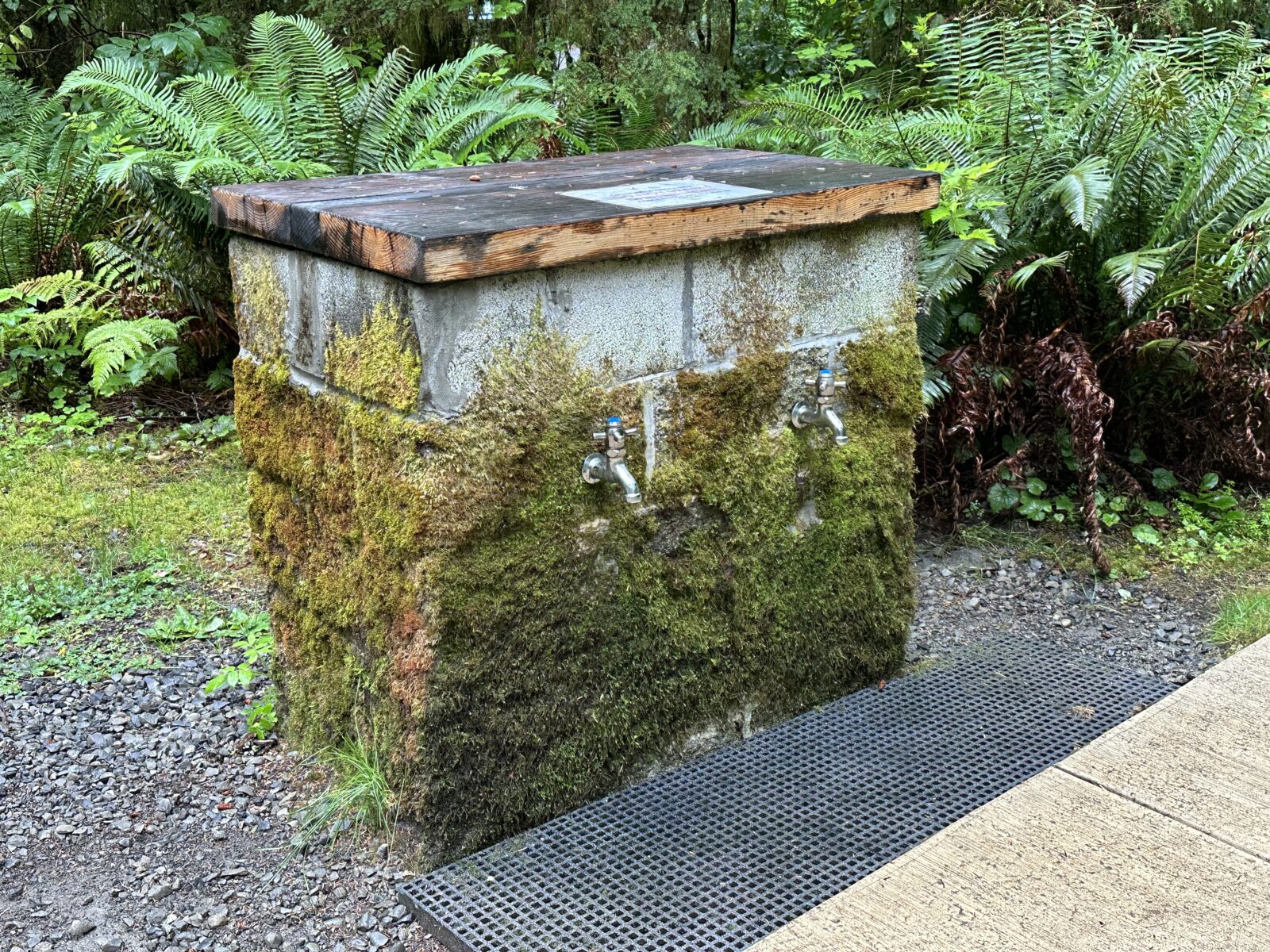
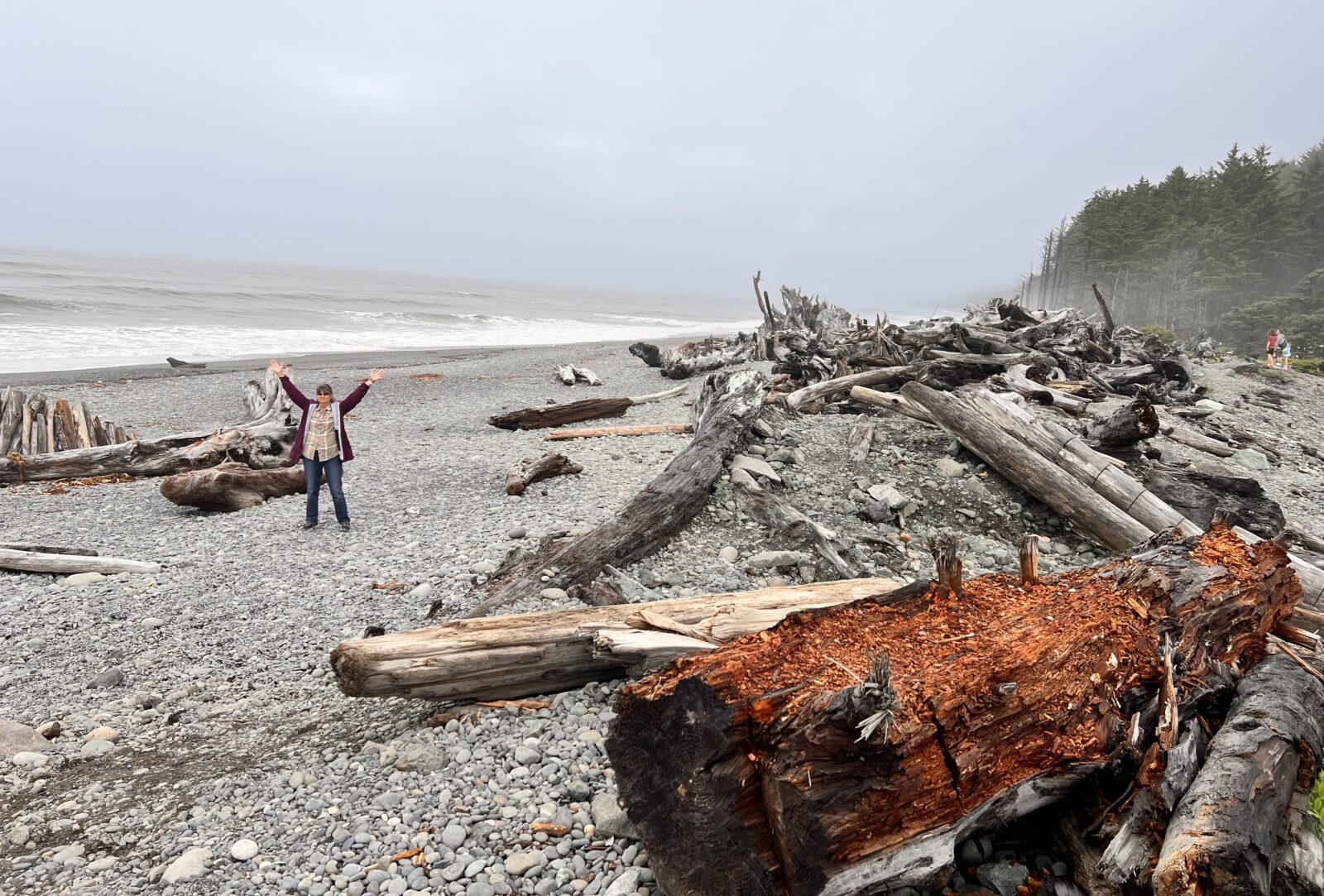
Hoh Rainforest
Your next stop is Kalaloch Campground, about an hour down 101. On our last trip, we saw signs for the Hoh Rainforest Visitor Center and took a side trip heading east on Upper Hoh Road. We only made it to the Hard Rain Cafe about a half-hour in; other diners cautioned us that it was another half hour to get to the Visitor Center, and there was an hour wait just to get into the parking lot, so we turned back. We did have time, however, to walk across the street to explore this trail to the river. If we were to go again, we’d plan to spend one night at the Hoh Rainforest Campground.
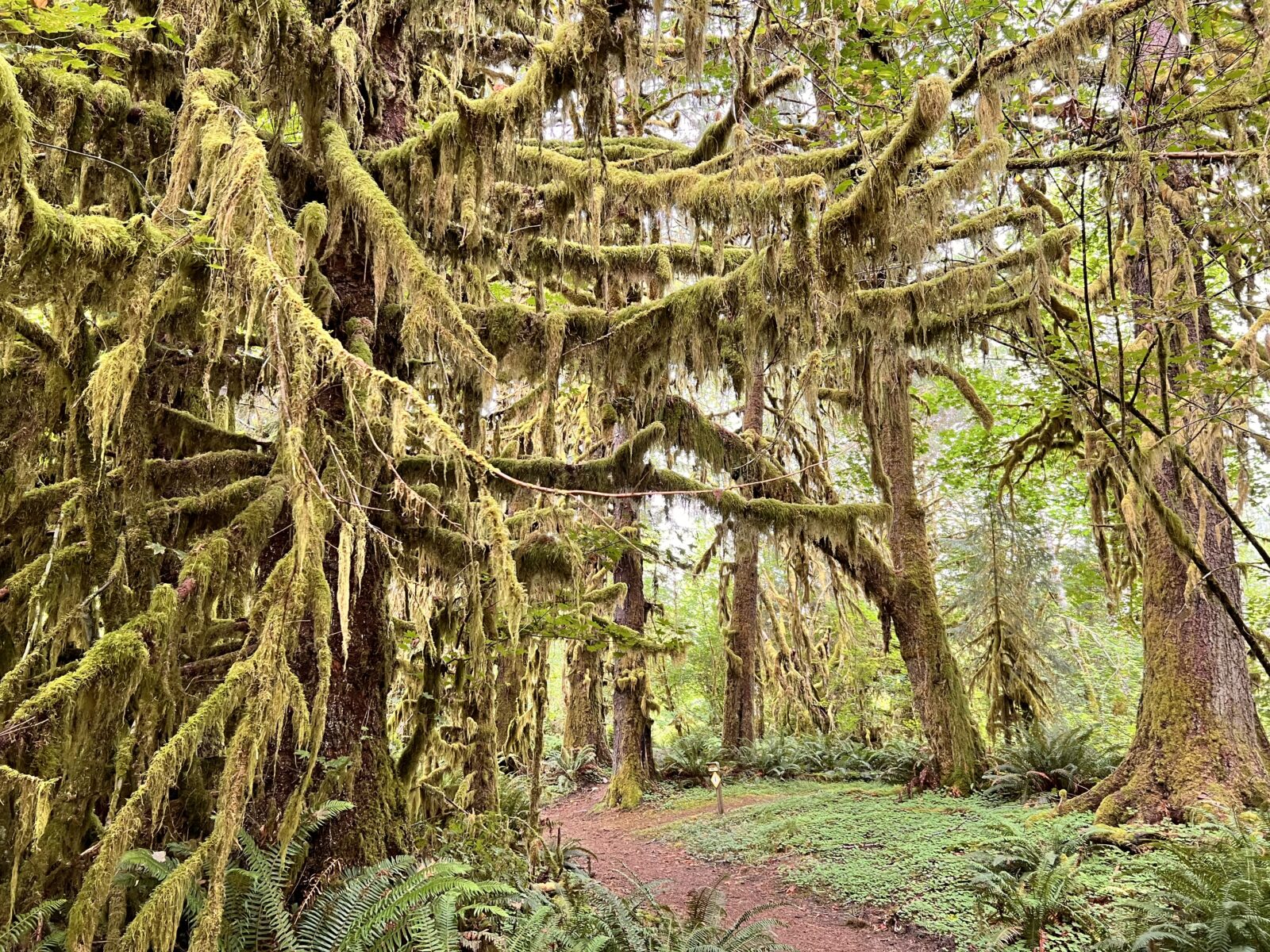
Ruby Beach
Continuing along 101, you’ll see signs for Ruby Beach, one of the most popular areas in the Olympic Peninsula. It’s worth a stop.
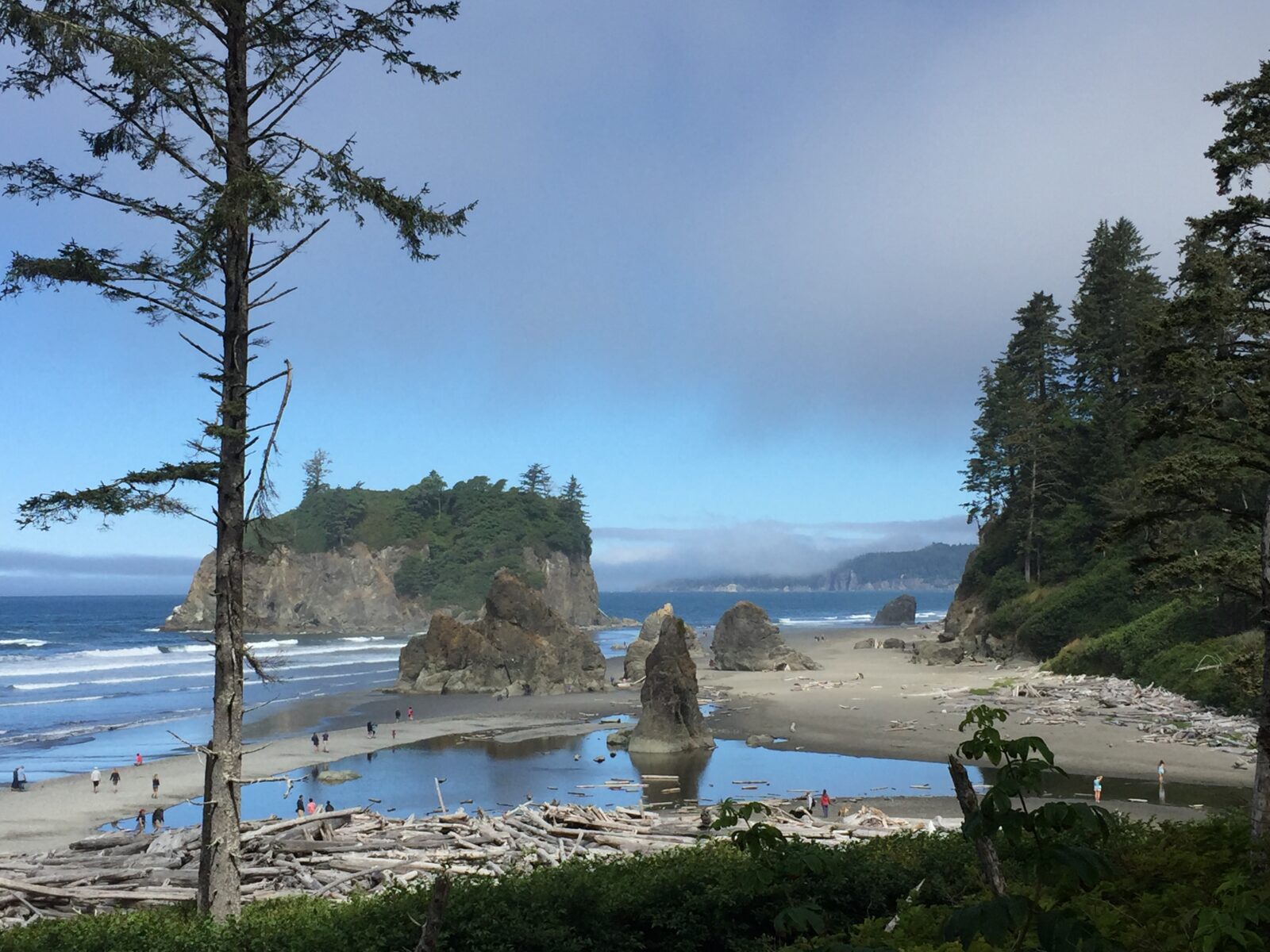
Kalaloch Campground
Kalaloch is one of the most popular areas of Olympic National Park, and we were lucky to grab a site at its campground, which has the same six-month, two-week, and four-day release of campsites. The campground sits atop a bluff; hiking along the sandy beach, searching tide pools for creatures, and birdwatching are popular activities. Kalaloch Lodge is a half-mile south of the campground; its Creekside Restaurant is open for breakfast and dinner, making a pleasant stop on your way out.
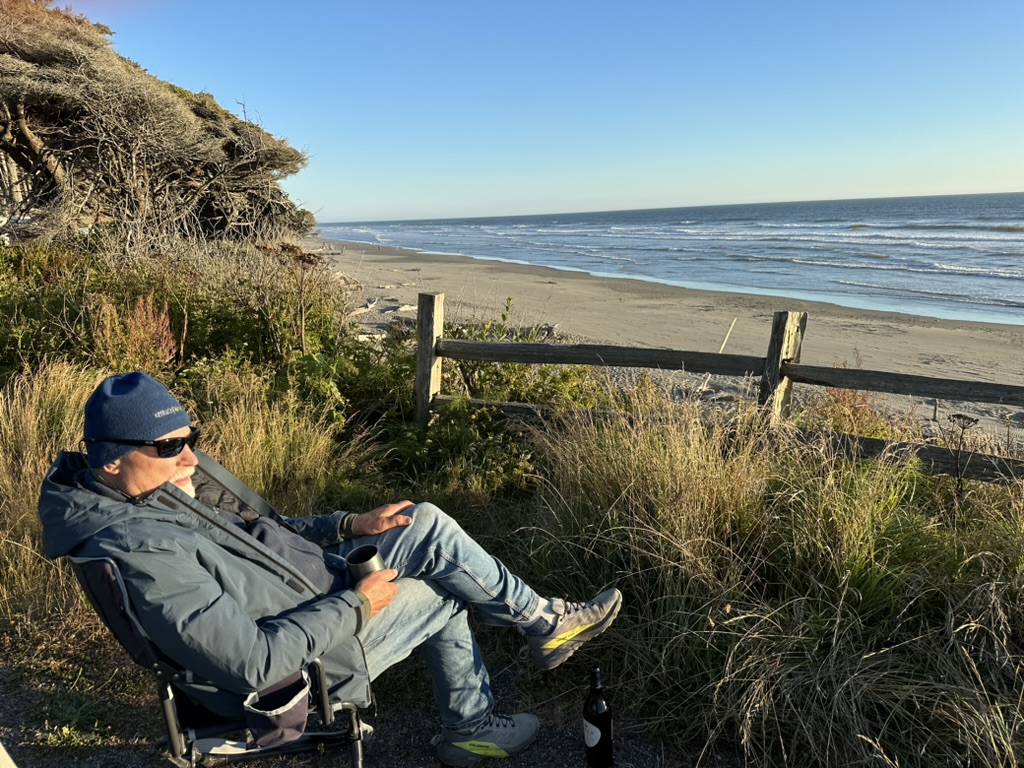
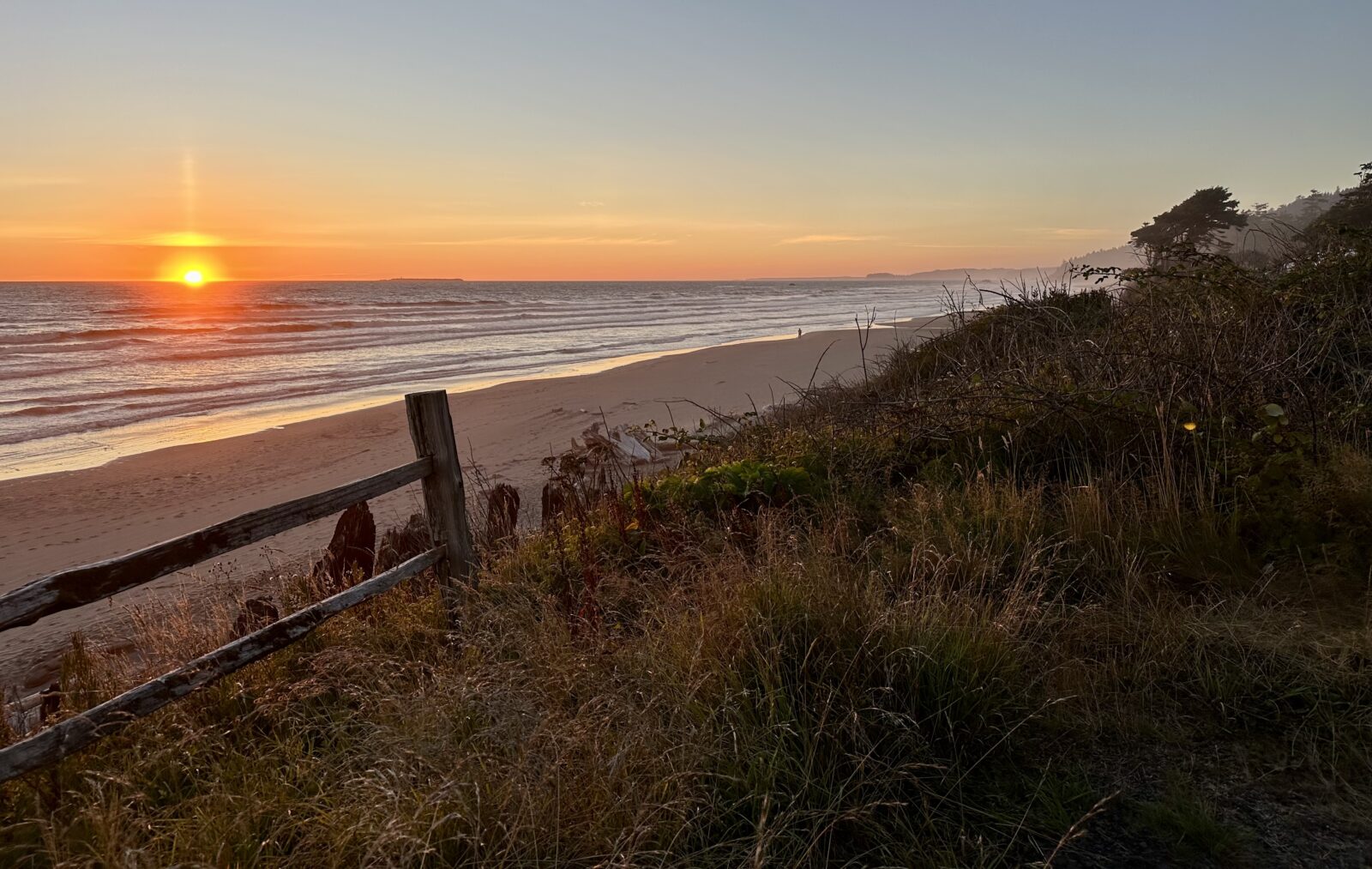
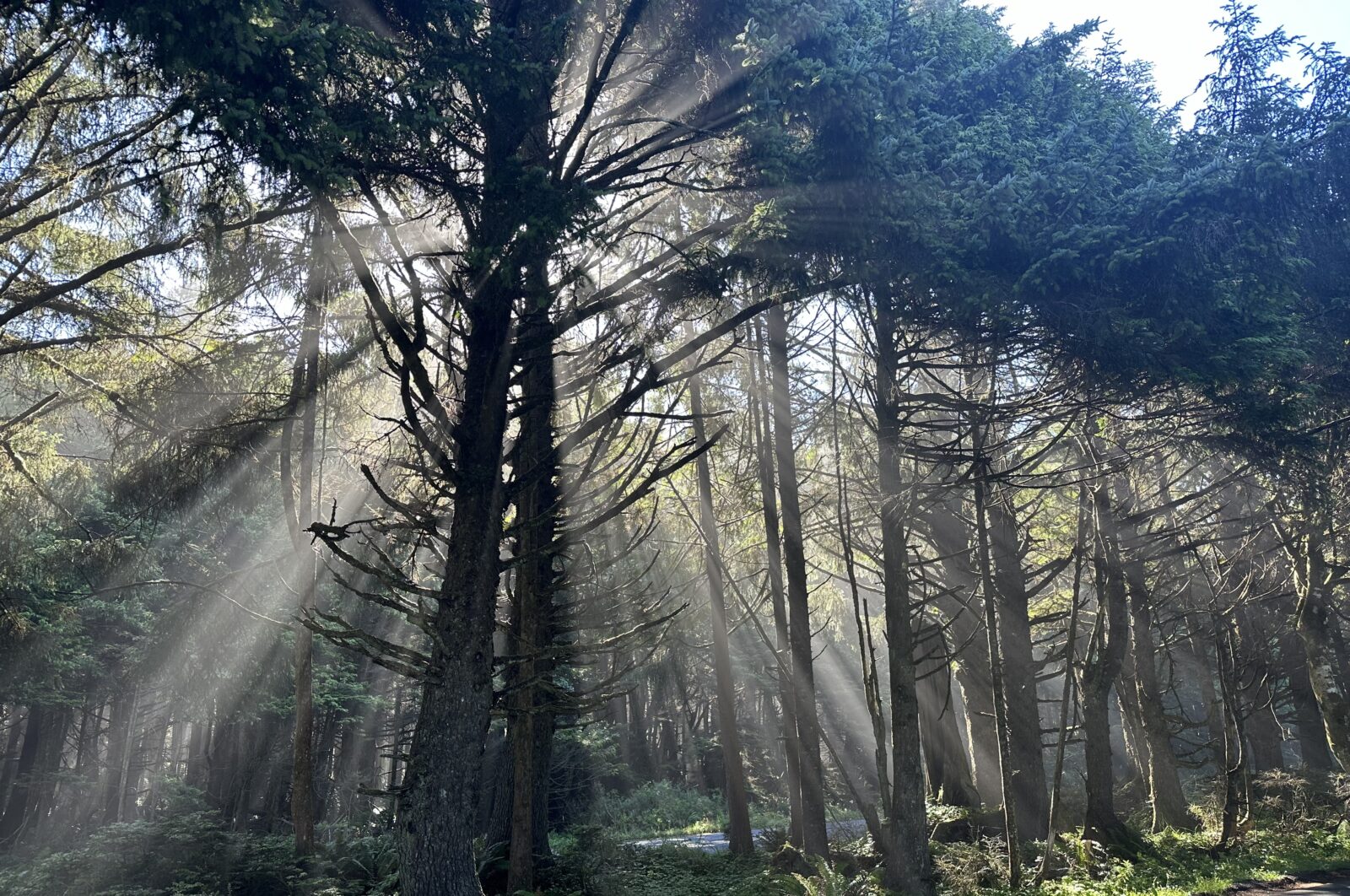
Lake Quinault
Once you leave Kalaloch Campground, reaching Lake Quinault is another 40 minutes. Time spent in the Quinault Valley at Lake Quinault will give you a peek into the vibrant life within the “Valley of the Rain Forest Giants.”
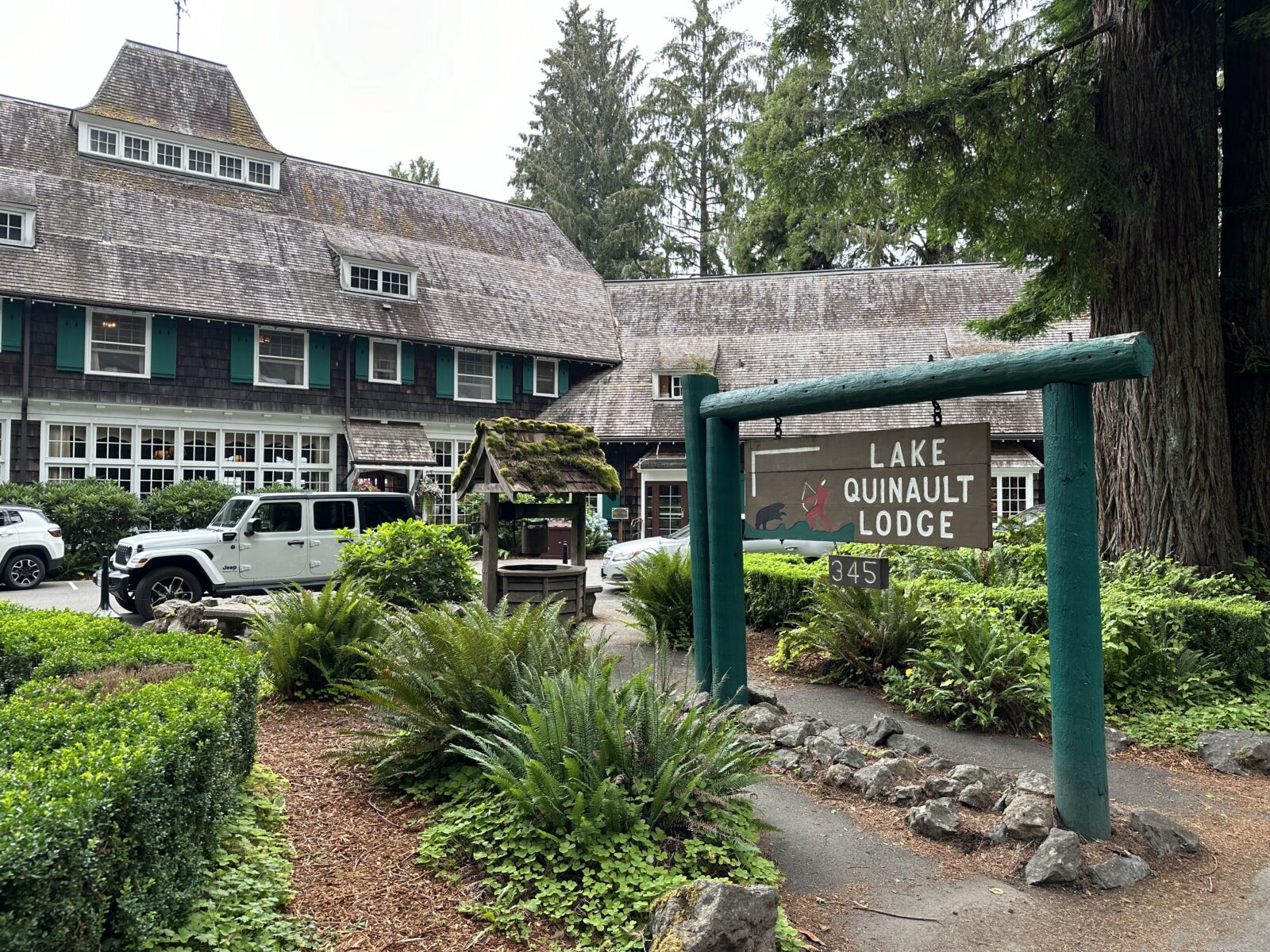
Here, you’ll find the big ones, the record holders. Giant western red and Alaskan cedars, Sitka spruce, western and mountain hemlocks, and five of the ten largest Douglas Firs are found here.

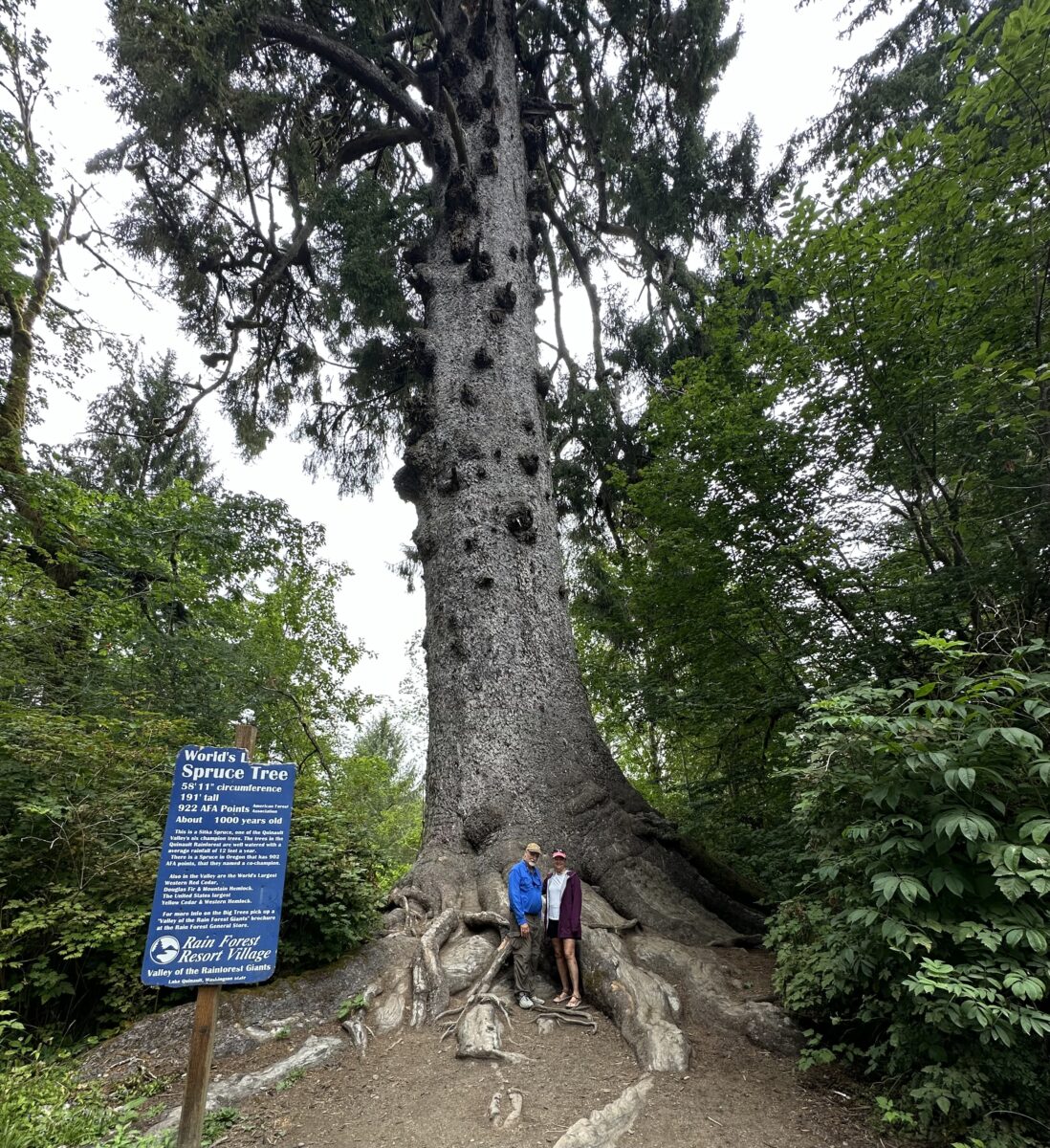
This is where we discovered an abundance of beautiful periwinkle blue hydrangeas along the roads.
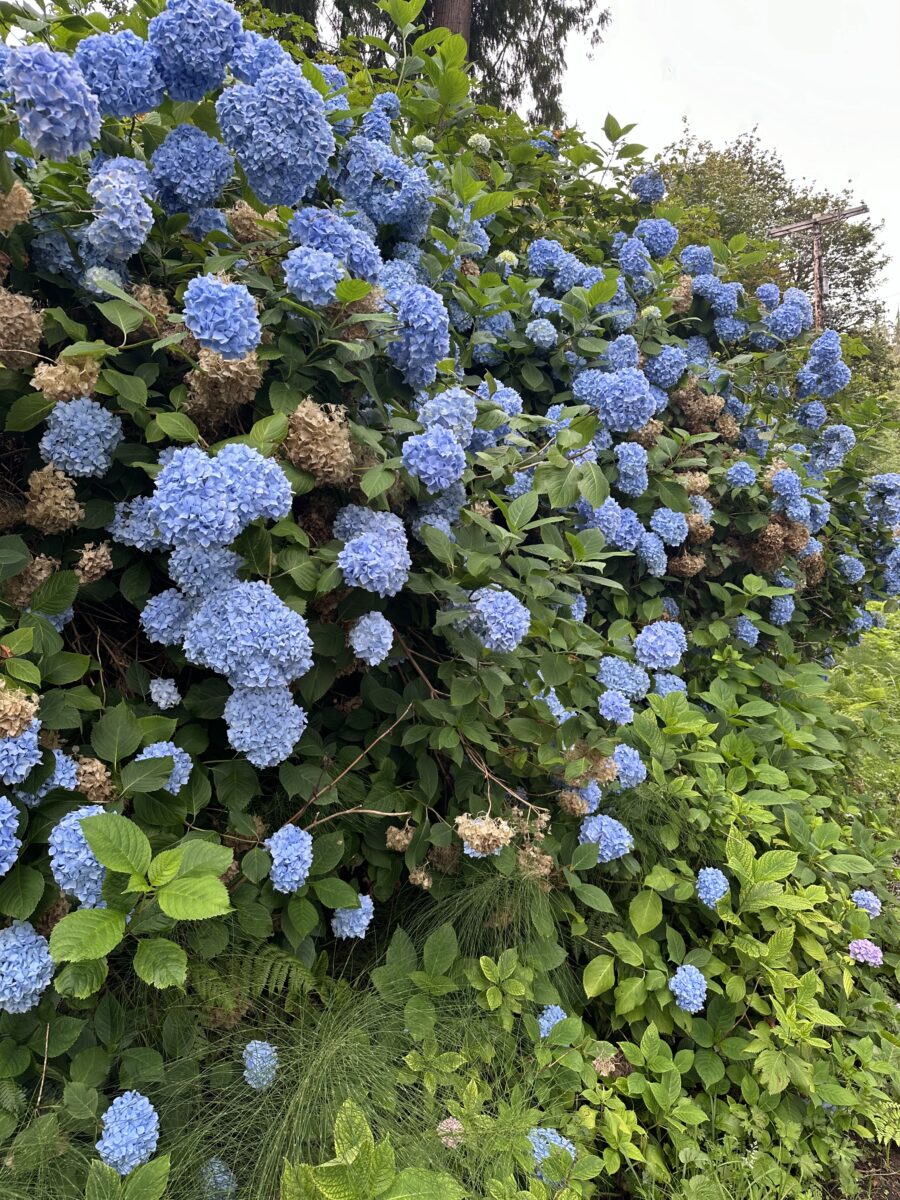
We stopped in at the lodge, and once we saw their breakfast menu, we decided to nix ours for theirs the next day.
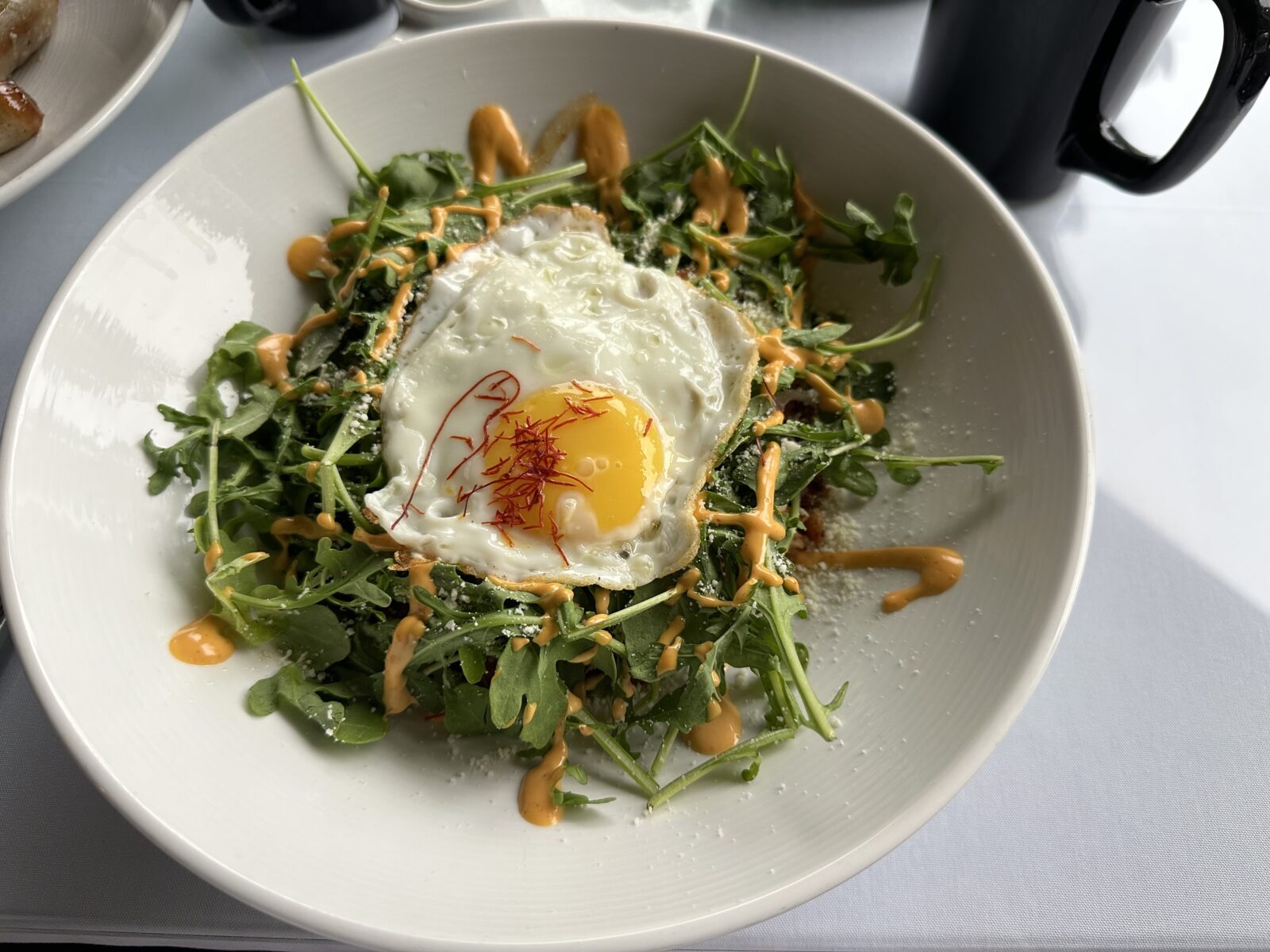
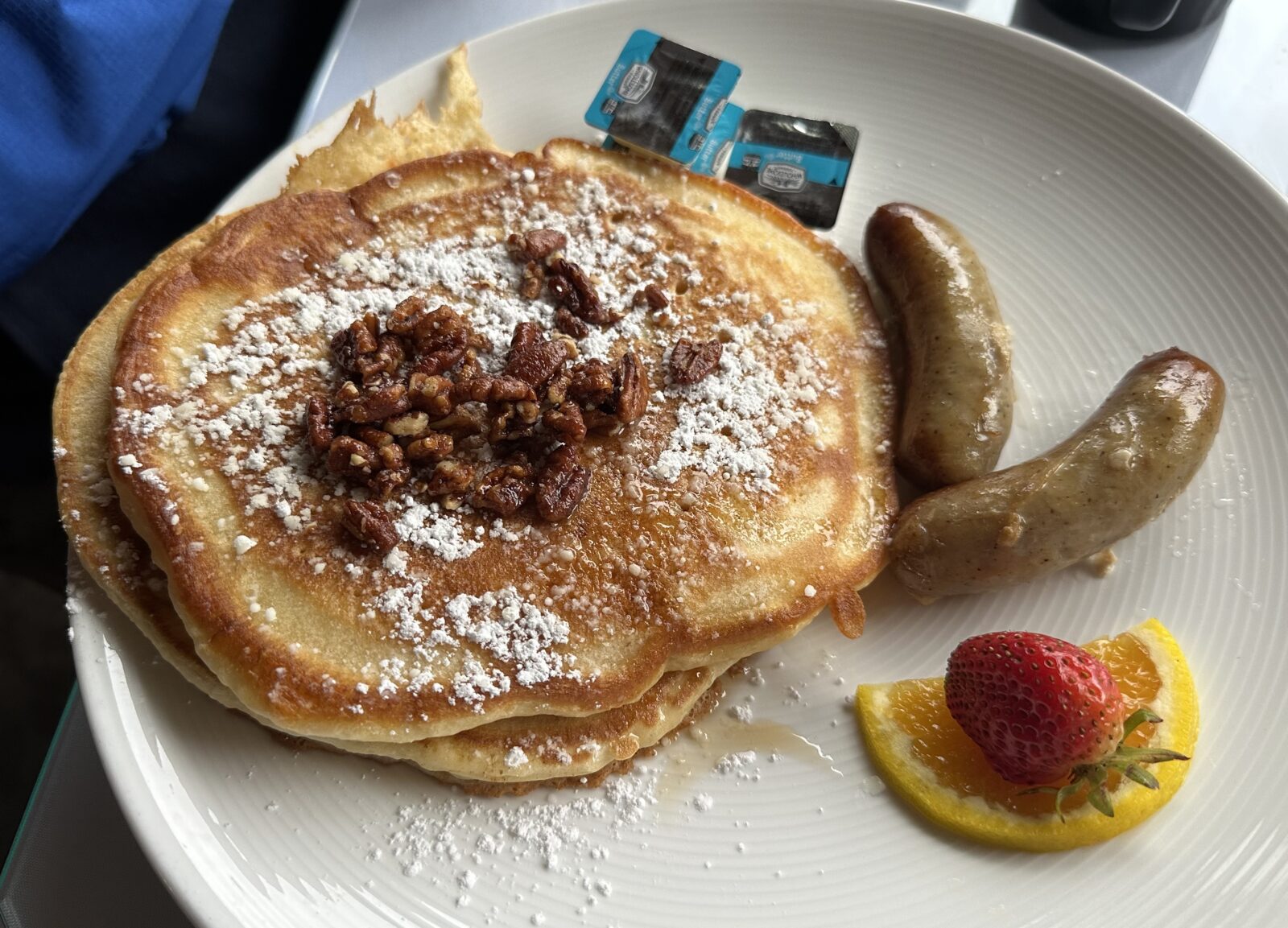
Cross-country travel is a journey to discover unknown places, and Olympic National Park, about 2,500 miles west of our home in Michigan, checked all our boxes for exploring a world different from where we live. That’s what traveling on the road is all about.
When You Go
Olympic National Park encompasses nearly one million acres, including Mount Olympus, and more than 70 miles of rugged Pacific coastline, in addition to the rainforests. If you go during the summer, its peak season, we advise making campground reservations in advance. Although we could get last-minute accommodations at a few places, we had to drive around Lake Chenault and wait to see any cancellations. Also, remember that some of these places are in remote areas, with just one or two small towns along the way. Plan to fuel up when you can, not when you need to, and if you are on the coast, always consult the tide charts before you hike along the coast.


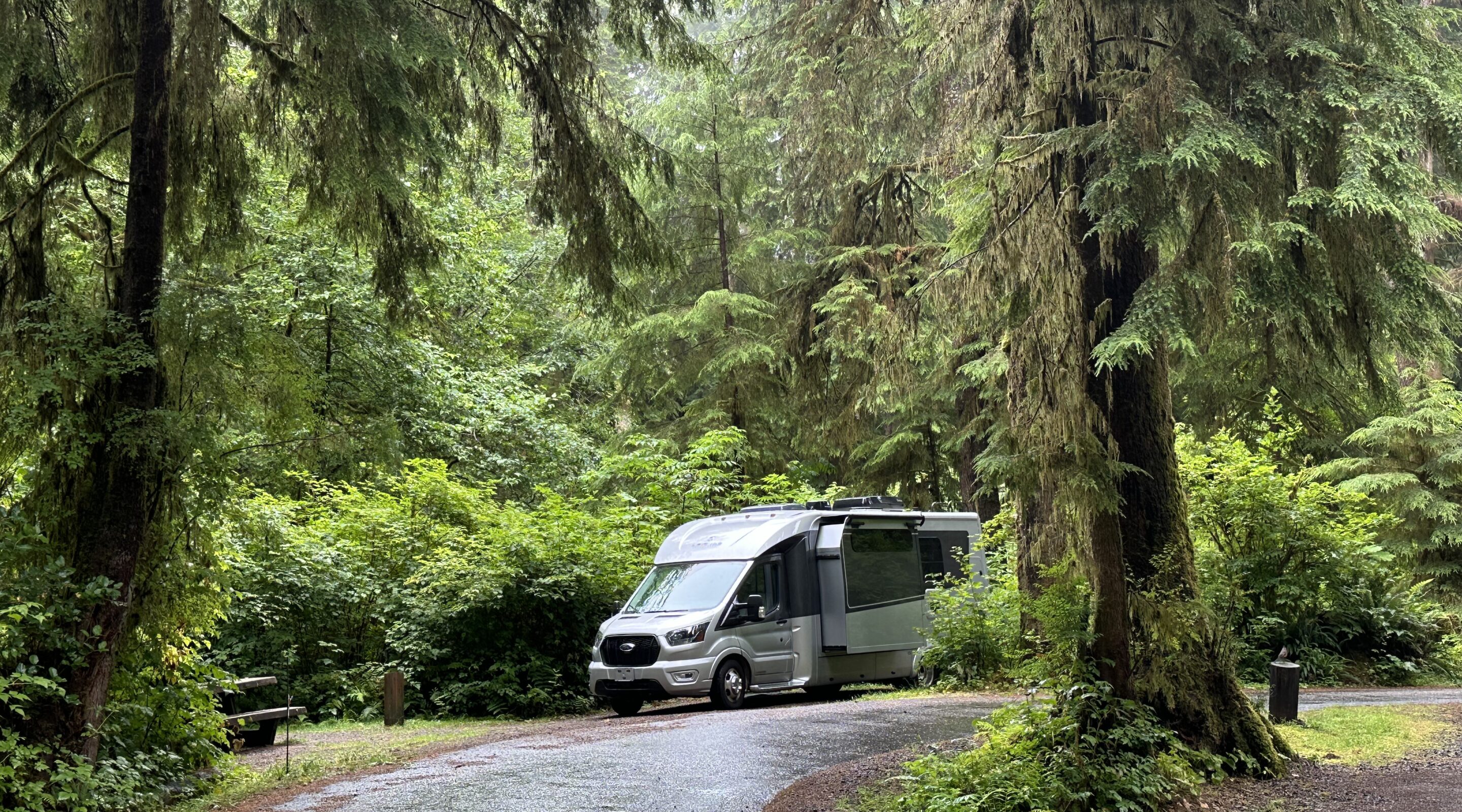
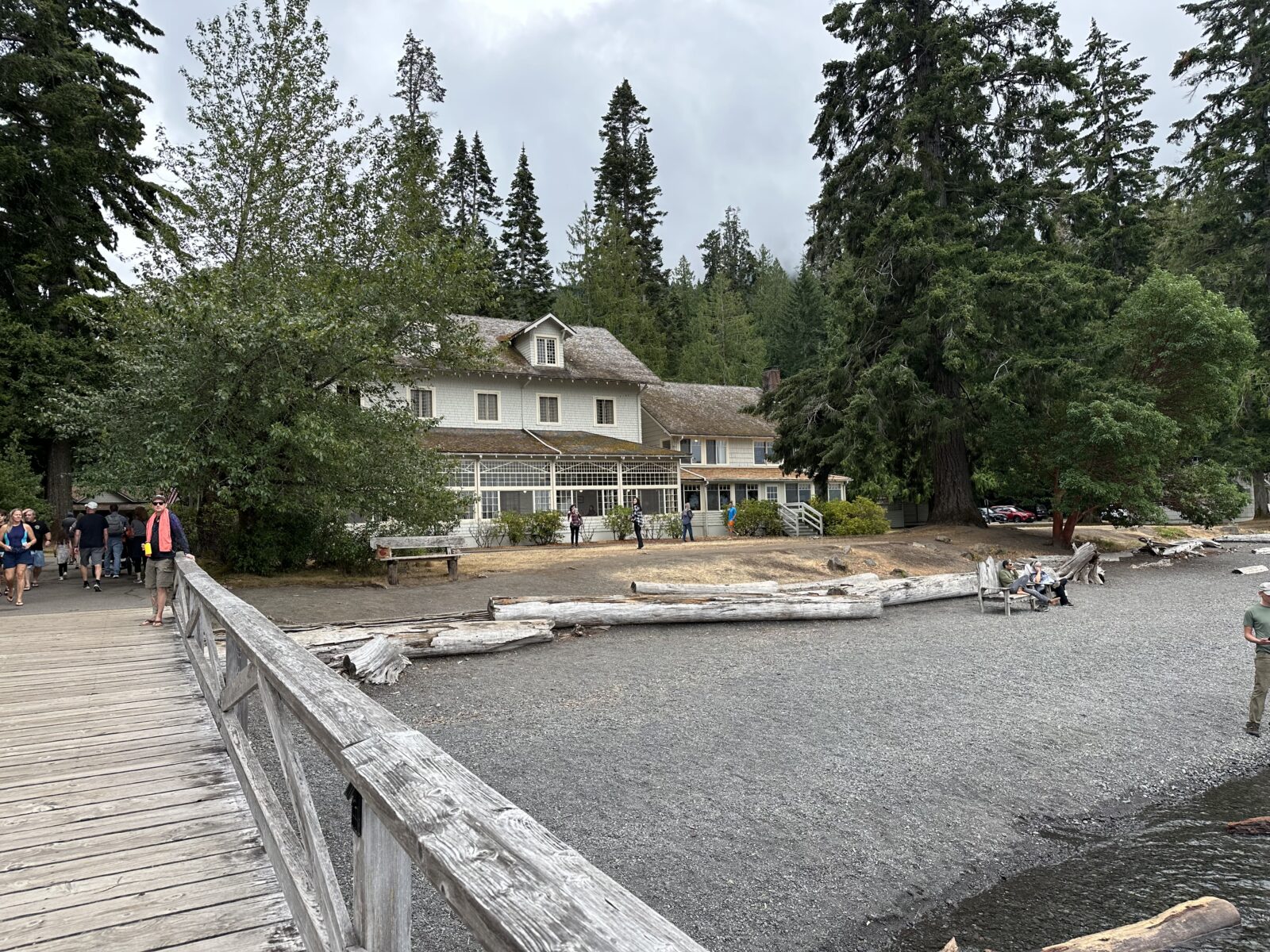
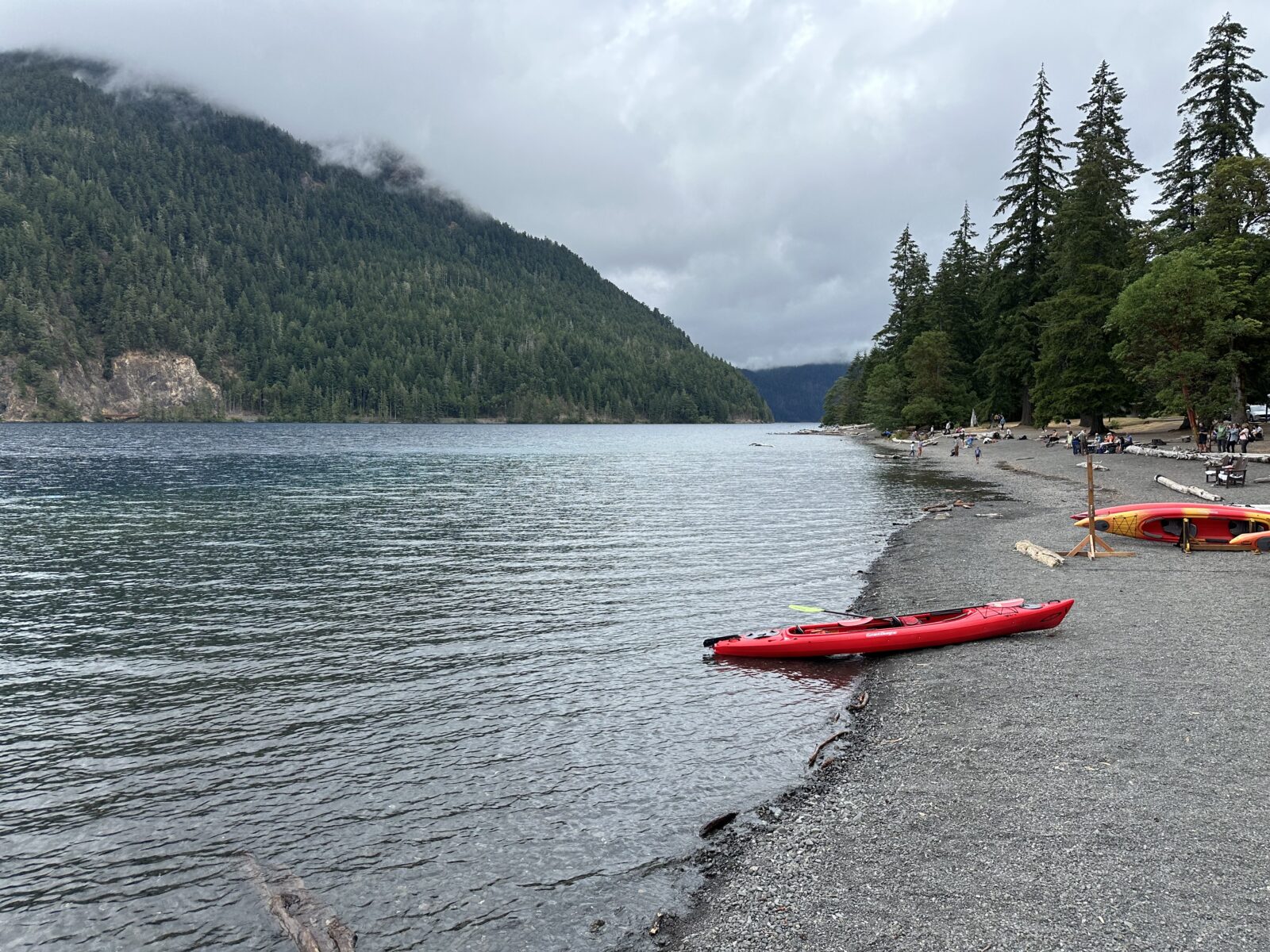
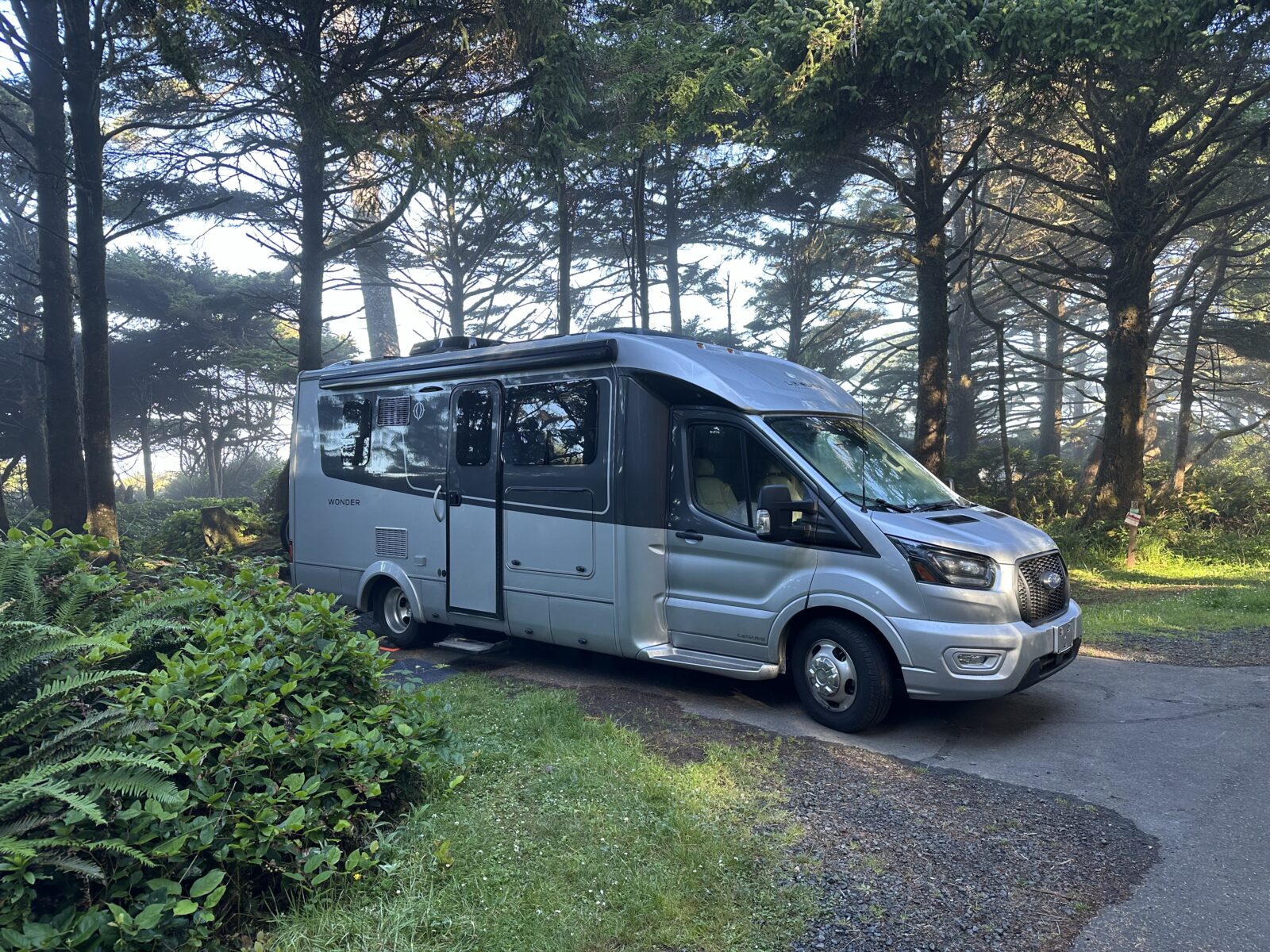
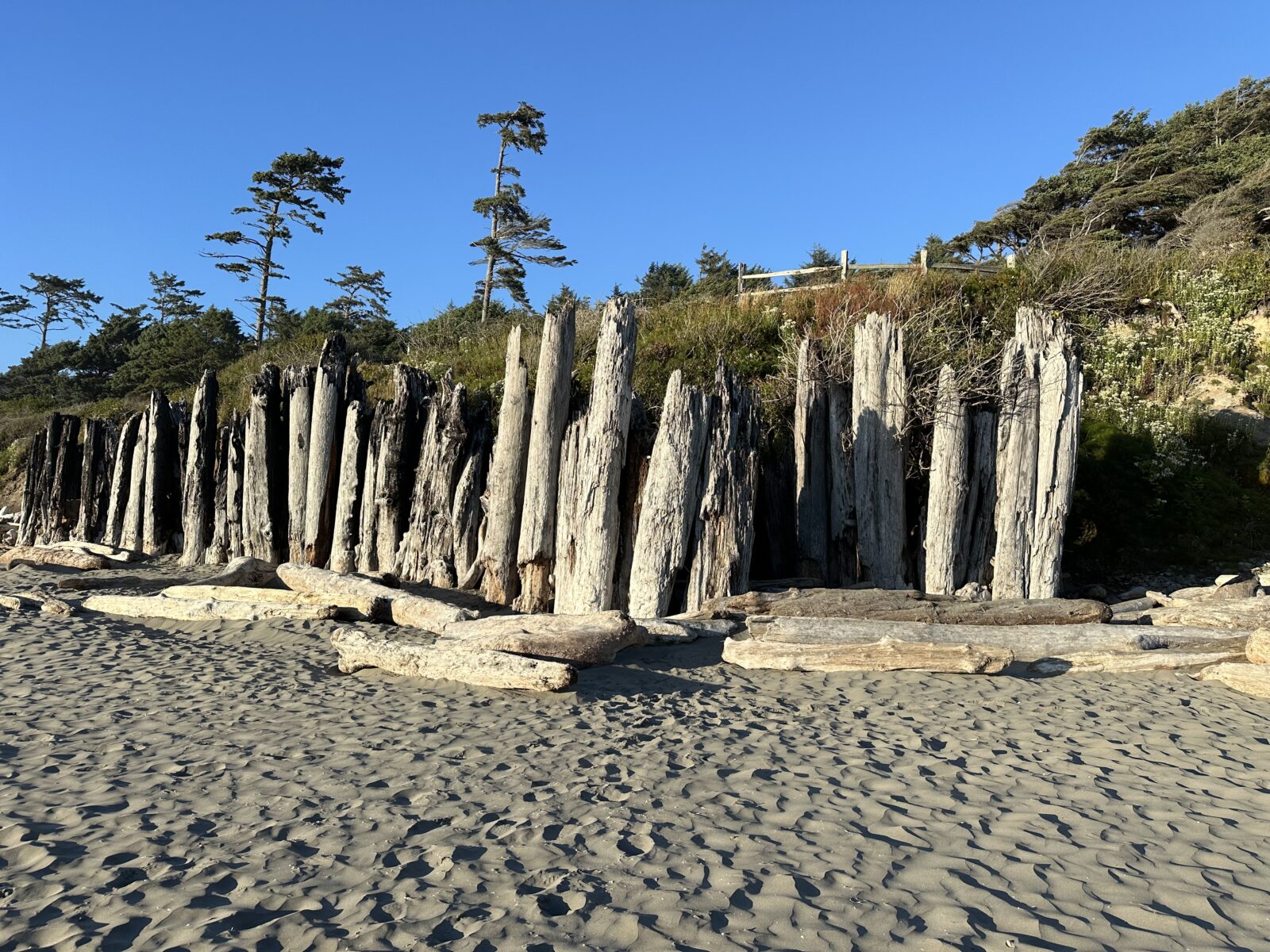
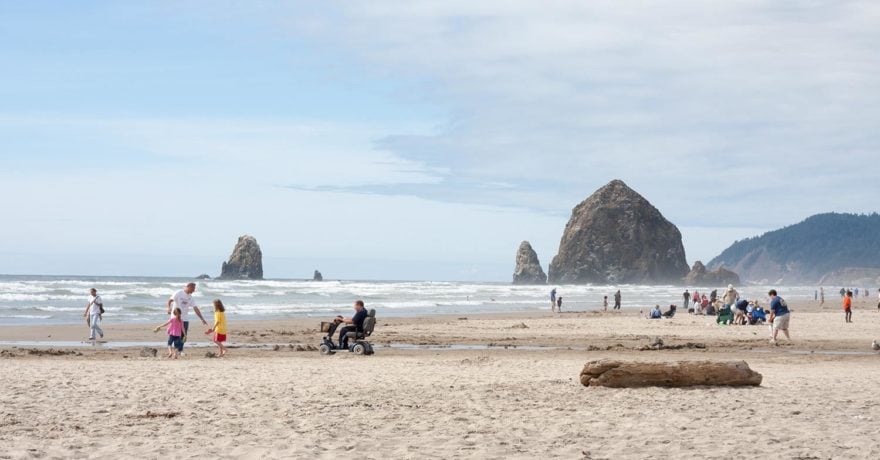
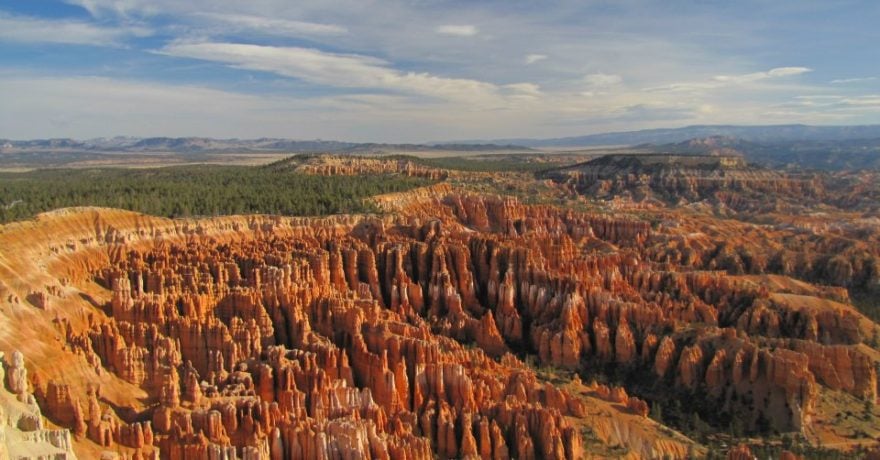
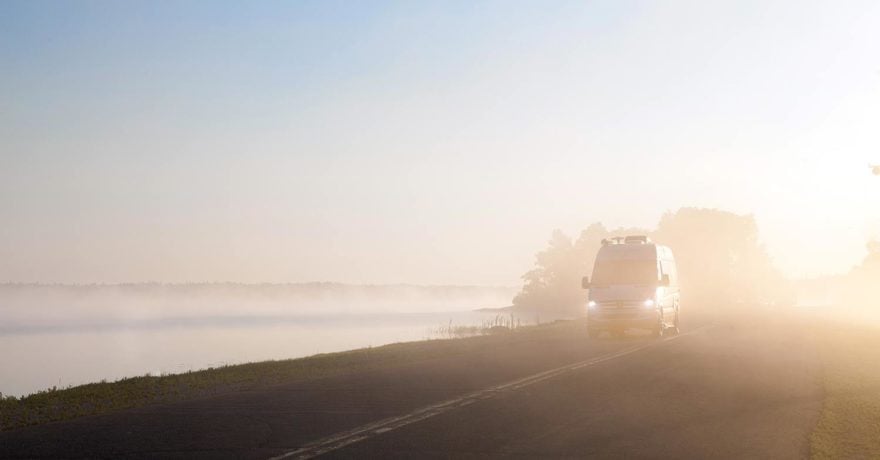
Comments